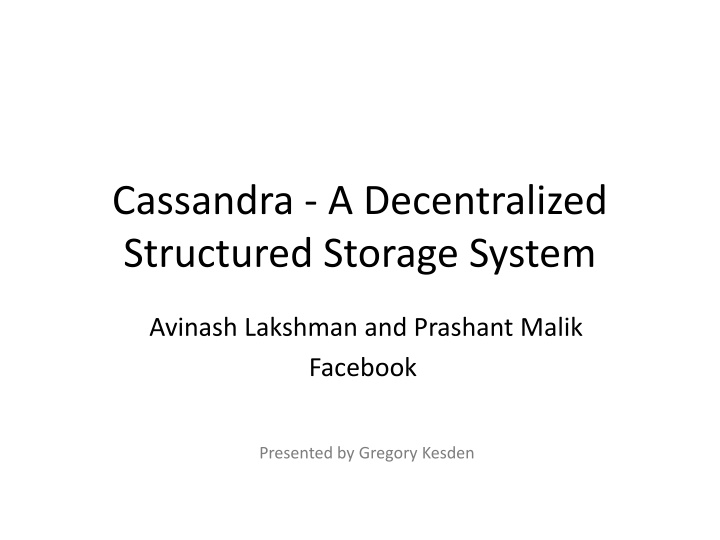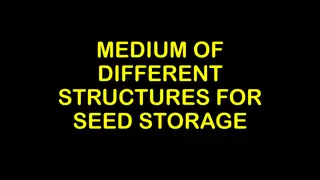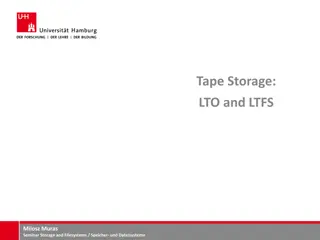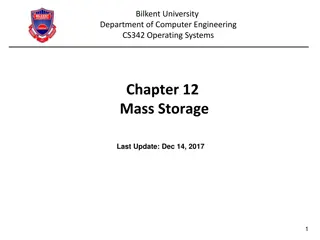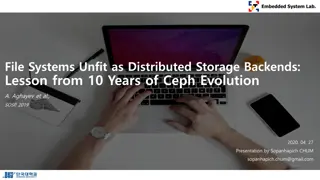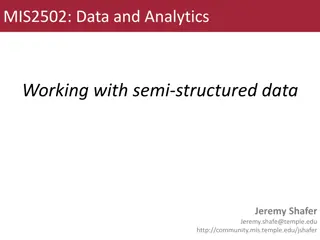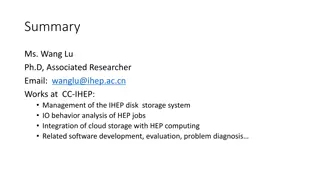Cassandra- A Decentralized Structured Storage System
This content discusses the Cassandra decentralized structured storage system as presented by Avinash Lakshman and Prashant Malik in Facebook. It explores the key features, architecture, and benefits of Cassandra in managing large amounts of structured data effectively. The decentralized nature of Cassandra enhances scalability and fault tolerance, making it a popular choice for various applications requiring high availability and performance. The content highlights the concepts and principles behind Cassandra's design, reflecting on its impact on modern data storage systems.
Download Presentation

Please find below an Image/Link to download the presentation.
The content on the website is provided AS IS for your information and personal use only. It may not be sold, licensed, or shared on other websites without obtaining consent from the author.If you encounter any issues during the download, it is possible that the publisher has removed the file from their server.
You are allowed to download the files provided on this website for personal or commercial use, subject to the condition that they are used lawfully. All files are the property of their respective owners.
The content on the website is provided AS IS for your information and personal use only. It may not be sold, licensed, or shared on other websites without obtaining consent from the author.
E N D
Presentation Transcript
Cassandra - A Decentralized Structured Storage System Avinash Lakshman and Prashant Malik Facebook Presented by Gregory Kesden
Agenda Outline Data Model System Architecture Implementation Experiments
Outline Extension of Bigtable with aspects of Dynamo Motivations: High Availability High Write Throughput Fail Tolerance
Data Model Table is a multi dimensional map indexed by key (row key). Columns are grouped into Column Families. 2 Types of Column Families Simple Super (nested Column Families) Each Column has Name Value Timestamp
Data Model keyspace column family column settings settings name value timestamp * Figure taken from Eben Hewitt s (author of Oreilly s Cassandra book) slides.
System Architecture Partitioning How data is partitioned across nodes Replication How data is duplicated across nodes Cluster Membership How nodes are added, deleted to the cluster
Partitioning Nodes are logically structured in Ring Topology. Hashed value of key associated with data partition is used to assign it to a node in the ring. Hashing rounds off after certain value to support ring structure. Lightly loaded nodes moves position to alleviate highly loaded nodes.
Replication Each data item is replicated at N (replication factor) nodes. Different Replication Policies Rack Unaware replicate data at N-1 successive nodes after its coordinator Rack Aware uses Zookeeper to choose a leader which tells nodes the range they are replicas for Datacenter Aware similar to Rack Aware but leader is chosen at Datacenter level instead of Rack level.
Partitioning and Replication h(key1) 1 0 E A N=3 C h(key2) F B D 1/2 * Figure taken from Avinash Lakshman and Prashant Malik (authors of the paper) slides. 9
Gossip Protocols Network Communication protocols inspired for real life rumour spreading. Periodic, Pairwise, inter-node communication. Low frequency communication ensures low cost. Random selection of peers. Example Node A wish to search for pattern in data Round 1 Node A searches locally and then gossips with node B. Round 2 Node A,B gossips with C and D. Round 3 Nodes A,B,C and D gossips with 4 other nodes Round by round doubling makes protocol very robust.
Gossip Protocols Variety of Gossip Protocols exists Dissemination protocol Event Dissemination: multicasts events via gossip. high latency might cause network strain. Background data dissemination: continuous gossip about information regarding participating nodes Anti Entropy protocol Used to repair replicated data by comparing and reconciling differences. This type of protocol is used in Cassandra to repair data in replications.
Cluster Management Uses Scuttleback (a Gossip protocol) to manage nodes. Uses gossip for node membership and to transmit system control state. Node Fail state is given by variable phi which tells how likely a node might fail (suspicion level) instead of simple binary value (up/down). This type of system is known as Accrual Failure Detector.
Accrual Failure Detector If a node is faulty, the suspicion level monotonically increases with time. (t) k as t k Where k is a threshold variable (depends on system load) which tells a node is dead. If node is correct, phi will be constant set by application. Generally (t) = 0
Bootstrapping and Scaling Two ways to add new node New node gets assigned a random token which gives its position in the ring. It gossips its location to rest of the ring New node reads its config file to contact it initial contact points. New nodes are added manually by administrator via CLI or Web interface provided by Cassandra. Scaling in Cassandra is designed to be easy. Lightly loaded nodes can move in the ring to alleviate heavily loaded nodes.
Local Persistence Relies on local file system for data persistency. Write operations happens in 2 steps Write to commit log in local disk of the node Update in-memory data structure. Why 2 steps or any preference to order or execution? Read operation Looks up in-memory ds first before looking up files on disk. Uses Bloom Filter (summarization of keys in file store in memory) to avoid looking up files that do not contain the key.
Read Operation Client Result Query Cassandra Cluster Closest replica Result Read repair if digests differ Replica A Digest Query Digest Response Digest Response Replica B Replica C * Figure taken from Avinash Lakshman and Prashant Malik (authors of the paper) slides.
Facebook Inbox Search Cassandra developed to address this problem. 50+TB of user messages data in 150 node cluster on which Cassandra is tested. Search user index of all messages in 2 ways. Term search : search by a key word Interactions search : search by a user id Latency Stat Search Interactions Term Search Min 7.69 ms 7.78 ms Median 15.69 ms 18.27 ms Max 26.13 ms 44.41 ms
Comparison with MySQL MySQL > 50 GB Data Writes Average : ~300 ms Reads Average : ~350 ms Cassandra > 50 GB Data Writes Average : 0.12 ms Reads Average : 15 ms Stats provided by Authors using facebook data.
Comparison using YCSB Following results taken from Benchmarking Cloud Serving Systems with YCSB by Brain F Cooper et all. YCSB is Yahoo Cloud Server Benchmarking framework. Comparison between Cassandra, HBase, PNUTS, and MySQL. Cassandra and Hbase have higher read latencies on a read heavy workload than PNUTS and MySQL, and lower update latencies on a write heavy workload. PNUTS and Cassandra scaled well as the number of servers and workload increased proportionally.
Comparison using YCSB Cassandra, HBase and PNUTS were able to grow elastically while the workload was executing. PNUTS and Cassandra scaled well as the number of servers and workload increased proportionally. HBase s performance was more erratic as the system scaled.
